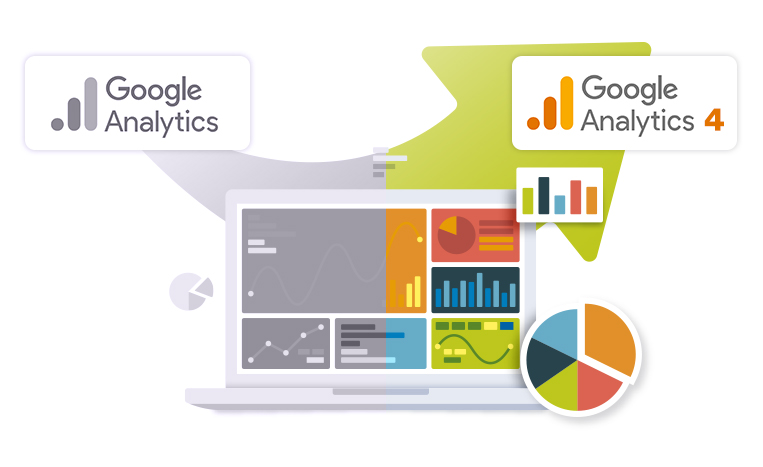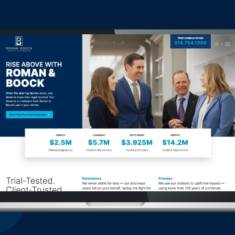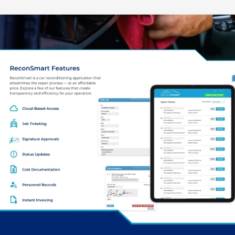The Great Data Migration: Everything You Should Know Before You Set Up Google Analytics 4
09.14.22
Google is a leading force in analytics and automation, with approximately 28.1 million websites using Google Analytics to track, gather and store user data. In 2020, Google announced the migration of Universal Analytics (UA) into their newest analytics platform, Google Analytics 4 (GA4), which will address evolving measurement standards, international data privacy laws and increasing cross-platform data discoveries.
Before the full migration occurs on July 1, 2023, we are here to educate you on why you need to switch from Universal Analytics and set up Google Analytics 4.
What is Google Analytics 4?
Many may initially assume Google Analytics 4 is just another upgrade, but it is not. GA4 is a new version of Google Analytics based on a flexible event-based data model, built entirely around user journeys on your website or app. Universal Analytics is the current session-based data model centered on grouping user interactions through cookie-based sessions on your website.
UA was meant for a desktop world, where there was only one device that ruled the data stage. With the way people use the internet and data today, Google created GA4 to accommodate multiple internet-accessing devices like mobile phones, tablets, laptops and apps. Additionally, new privacy regulations make it difficult to track data within previous models. Web users now have the option to opt out of data tracking by directly telling apps and websites “not to track” their cookies, or by using another blocking platform to stop tracking all together — limiting the data that cookie-based UA may collect.
GA4 gives a business complete understanding of their consumer life cycle through the platform’s ROI improvements, user-level data management across platforms, predictive insights tools, expanded integrations and increased privacy protections. It allows businesses to craft their own form of data storytelling without sifting through multiple layers of data they may not need.
What Does this Mean for My Business?
Google will be “sunsetting” Universal Analytics in July of 2023 — meaning it will stop tracking new data from your website unless you have set up Google Analytics 4. You will be able to access its past data through the end of 2023, but this great data migration will not happen automatically as a typical update on your phone or computer would.
It is on each business to create their GA4 properties, migrate key conversions and event tracking, export historical data, and learn the GA4 platform before UA disappears. If you do not transition to GA4 by the official sunset date, your business will experience a blackout period, where web activity will not be tracked until the new GA4 account is set up. To avoid a potential blackout in data, it is essential for businesses to set up Google Analytics 4 before July 1, 2023.
How Should You Prepare?
As you prepare to switch to Google Analytics 4, we have five key steps you should consider:
- Do your research. Seek out resources by visiting Google Analytics’ Help Center, watching YouTube videos and reading blogs to further understand what is changing with GA4. Consider what you can do yourself or if you need to start planning for outsourced assistance.
- Audit your current UA property. Consider what you want to continue tracking and what you may want to track after the transition.
- Dive into your website and plan ideal user journeys. Sit down with your team to determine ideal user journeys and strategies for those that visit your website. Consider where people will go after landing on certain pages, how to quantify a conversion through views, clicks or forms, and consider if new pages need to be added to your site to help complete a specific user journey.
- Have a plan for exporting past data. Universal Analytics will not be around forever. Make the time to determine what data you want to save and where you will save it after beginning your migration process.
- Make time to run both UA and GA4 simultaneously. Tracking both through your website may help you spot inconsistencies, uncover data that is very important to track and help you transition faster into the new platform.
Set Up Google Analytics 4 with Paradigm
The Google Analytics transition is coming and taking the necessary steps to prepare and set up Google Analytics 4 will only increase your understanding of your website’s tracking capabilities. However, we understand these technology transitions may leave you wondering where to start. Our digital team has taken the time to research the platform, develop planning strategies and help you transition into the new generation of Google Analytics.
If you need assistance setting up your account, building new dashboards or need to develop a timeline for a seamless migration process, contact our team to start now.
For more information, visit our previous blogs for additional details on Google Analytics 4.


